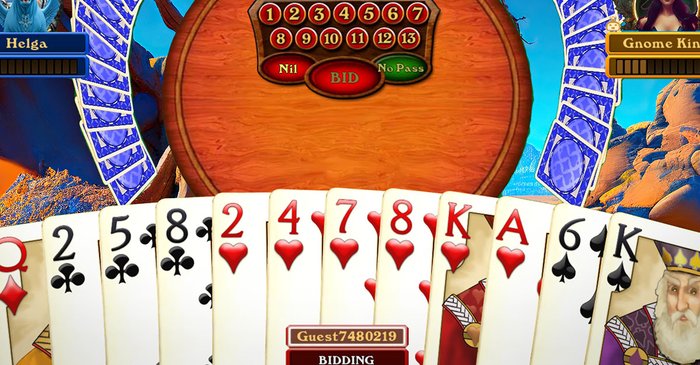Understanding Distribution in Spades: A Beginner's Guide

In Spades, assessing your hand's distribution is a key aspect of hand evaluation, alongside high-card points (HCP) and trump suit quality. Distribution refers to the arrangement of cards in your hand across the four suits: Spades, Hearts, Diamonds, and Clubs. In this blog post, we will discuss the importance of distribution and how it impacts your bidding and playing strategies in Spades. We will also introduce distribution notation, which is a convenient way to describe your hand's distribution.
1) Distribution Notation Explained
Distribution notation is a shorthand way of describing the number of cards you hold in each suit. The notation lists the number of cards in each suit, in the order of Spades, Hearts, Diamonds, and Clubs, separated by dashes. For example, a 4-3-3-3 distribution means you have four Spades, three Hearts, three Diamonds, and three Clubs in your hand.
2) Why Distribution Matters
Distribution matters in Spades because it affects your hand's trick-taking potential and provides opportunities for ruffing (playing a trump card on a non-trump trick). A hand with a balanced distribution (i.e., similar numbers of cards in each suit) might have limited trick-taking potential, while an unbalanced hand with voids (no cards in a suit) or singletons (only one card in a suit) can offer increased opportunities to win tricks.
3) Types of Distribution
There are several types of distribution you may encounter in Spades:
-
Balanced: Hands with a similar number of cards in each suit, such as 4-3-3-3, 4-4-3-2, or 5-3-3-2 (distribution notation). Balanced hands generally have fewer opportunities for ruffing and may rely more on high-card strength.
-
Unbalanced: Hands with significant disparities in suit lengths, such as 6-4-2-1, 5-4-4-0, or 7-3-2-1 (distribution notation). Unbalanced hands offer more opportunities for ruffing and may have increased trick-taking potential even with lower HCP.
-
Void: A hand with no cards in one suit. Voids can be powerful, as they allow you to ruff tricks in the void suit and potentially generate extra tricks.
-
Singleton: A hand with only one card in a suit. Singletons can also offer ruffing opportunities, although they are less powerful than voids.
4)How Distribution Impacts Bidding
When deciding your bid, consider your hand's distribution alongside your HCP and trump suit quality. An unbalanced hand with voids or singletons may justify a more aggressive bid, even with a lower HCP, as you have increased opportunities to win tricks through ruffing. Conversely, a balanced hand may require a more conservative bid, as you may rely more on high-card strength to win tricks.
5) Incorporating Distribution into Play
During the play of the hand, your distribution should influence your strategy:
-
If you have a void or singleton in a side suit, try to create opportunities to ruff in that suit, especially if you have a strong trump suit.
-
If you have a balanced hand, focus on winning tricks through high-card strength and consider preserving your trump cards to use at opportune moments.
-
If you have a long side suit with high-ranking cards, consider establishing tricks in that suit after drawing out the opponents' high-ranking Spades.
Conclusion
Understanding your hand's distribution is an essential aspect of hand evaluation in Spades. By considering factors like balanced and unbalanced hands, voids, and singletons, and using distribution notation to describe your
